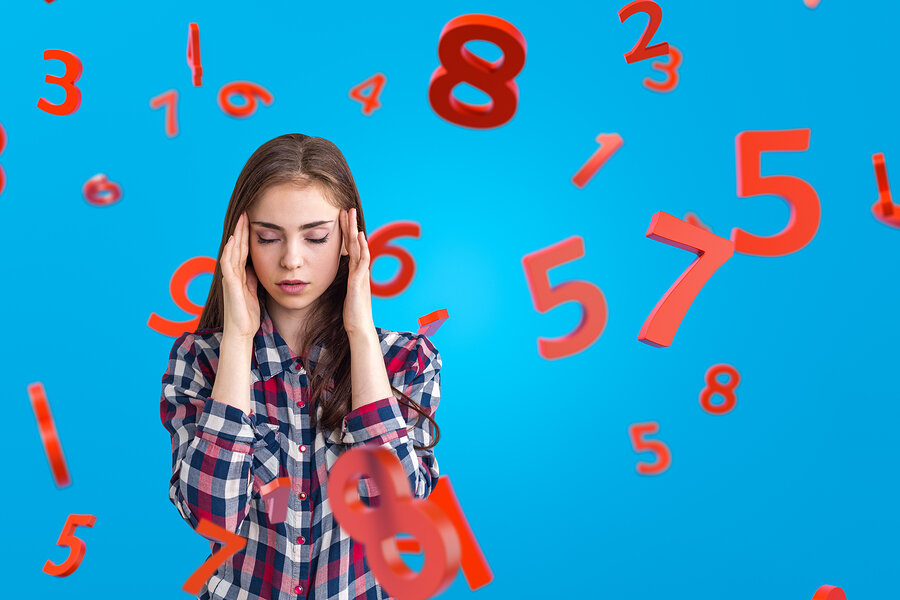What is dyscalculia? Dyscalculia is a neurological condition that makes it difficult to understand math and tasks involving mathematics. Often mistaken as dyslexia, dyscalculia is a numerical learning disorder where affected people may face difficulties understanding even the most basic concepts, such as understanding proportions. For example, if you are shown six apples and three oranges, you may have difficulty determining if there are more apples or oranges. Although it is easy to confuse dyscalculia and dyslexia, the latter is a learning disorder that includes difficulty reading and is quite common for a student to suffer from both disorders. Some 50 % to 60 % of dyslexics also struggle with maths.
Experts consider that 3% to 6% of the population suffers from dyscalculia and there are different levels of disability. In several cases, children eventually learn to struggle with numbers, but in others, everyday tasks such as cooking, shopping, going out to dinner, or anything involving numbers and basic math, such as calculating the tip, are difficult for them. On the other hand, some people may not have problems with basic mathematics, not showing signs of dyscalculia until later in their life when faced with more complex topics.
Dyscalculia has no cure and is not just a phase of in a student’s life; it is how his brain processes mathematics. Because dyscalculia is a learning disability, it is best to rely on experts in the field to develop mechanisms to help the affected persons throughout their lives.
Signs and symptoms of dyscalculia
In the book The Dyscalculia Tool Kit, Ronit Bird and Understood.org advise looking for the following signs to determine if a person has trouble with math:
-
Uses fingers to count or do basic processes
-
Does not remember basic mathematical processes
-
Has difficulty handling money and constantly hands over the wrong amount
-
Has problems telling the time on an analog clock
-
Like dyslexics, the person has trouble identifying the right or the left
-
Has problems with sequential numbers or patterns
-
Does not understand concepts like more or less
-
Has difficulty associating a word with a symbol
-
Has problems remembering multiplication tables or other mathematical formulas
-
It is not able to judge speed or distance correctly
While for many, dyscalculia means simply that someone is “bad at maths,” it is important to note that this is a neurological problem, just like dyslexia. Although the exact causes are not known, it is believed that it comes from the structure of the brain and its functioning. It can be a learning disability that is genetic or has to do with the development of the brain. Researchers are looking for ways to “reconnect” the brain to facilitate the learning of mathematics.
How is dyscalculia diagnosed?
To find out if someone suffers from dyscalculia, experts conduct evaluations that can also help to identify other learning challenges and the tools and practices to help overcome them. Tests include:
-
Counting: One of the most revealing tests. Here the person is asked to count backward, to count points, or complete exercises designed to see how they group numbers. The test is called the Neuropsychological Test Battery for Number Processing and Calculation in Children.
-
Drawing Shapes: Visual and spatial skills are an essential part of mathematics, so copying shapes or drawing them from memory is another test that helps to determine if a person has dyscalculia. If a girl, for example, has trouble identifying a trapezoid from another angle, this could be a sign that she has numerical learning problems.
-
Observation: Sometimes, experts will want to see the student in the classroom to see how he or she is developing in the school environment.
Although dyslexia is more widely known and diagnosed, these two disorders can be confused. Dyscalculia is a learning disorder that many students and adults face every day and can affect people’s day-to-day lives. Having a timely diagnosis and help from experts and teachers can help them fare well in school, work, and life.
This article from Observatory of the Institute for the Future of Education may be shared under the terms of the license CC BY-NC-SA 4.0 
)
)


)